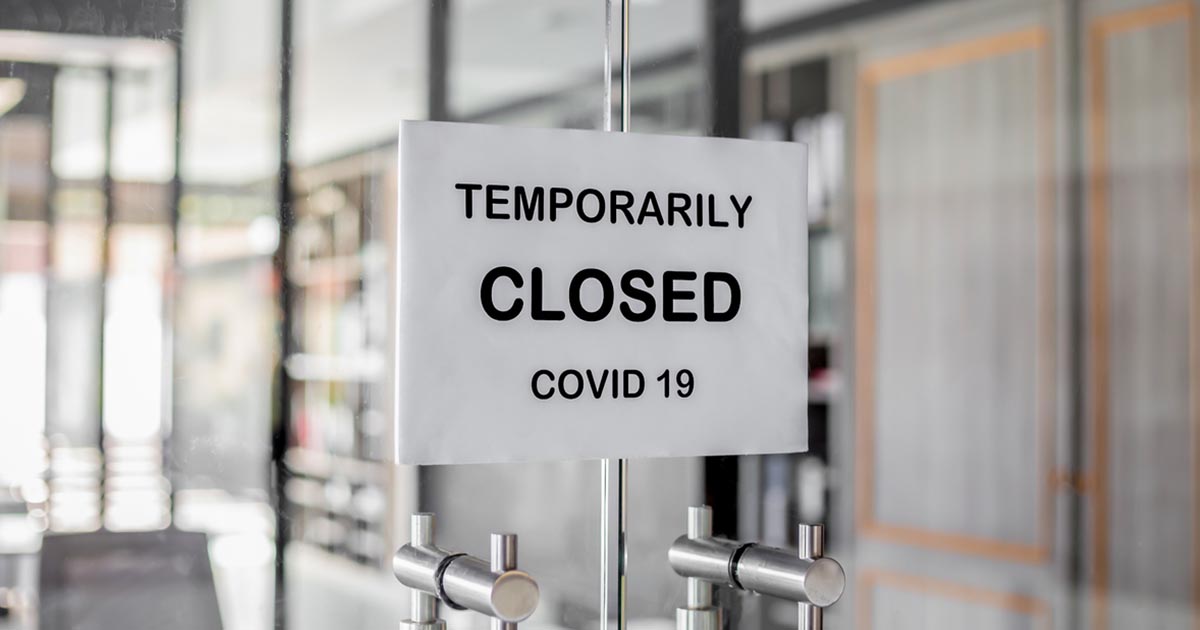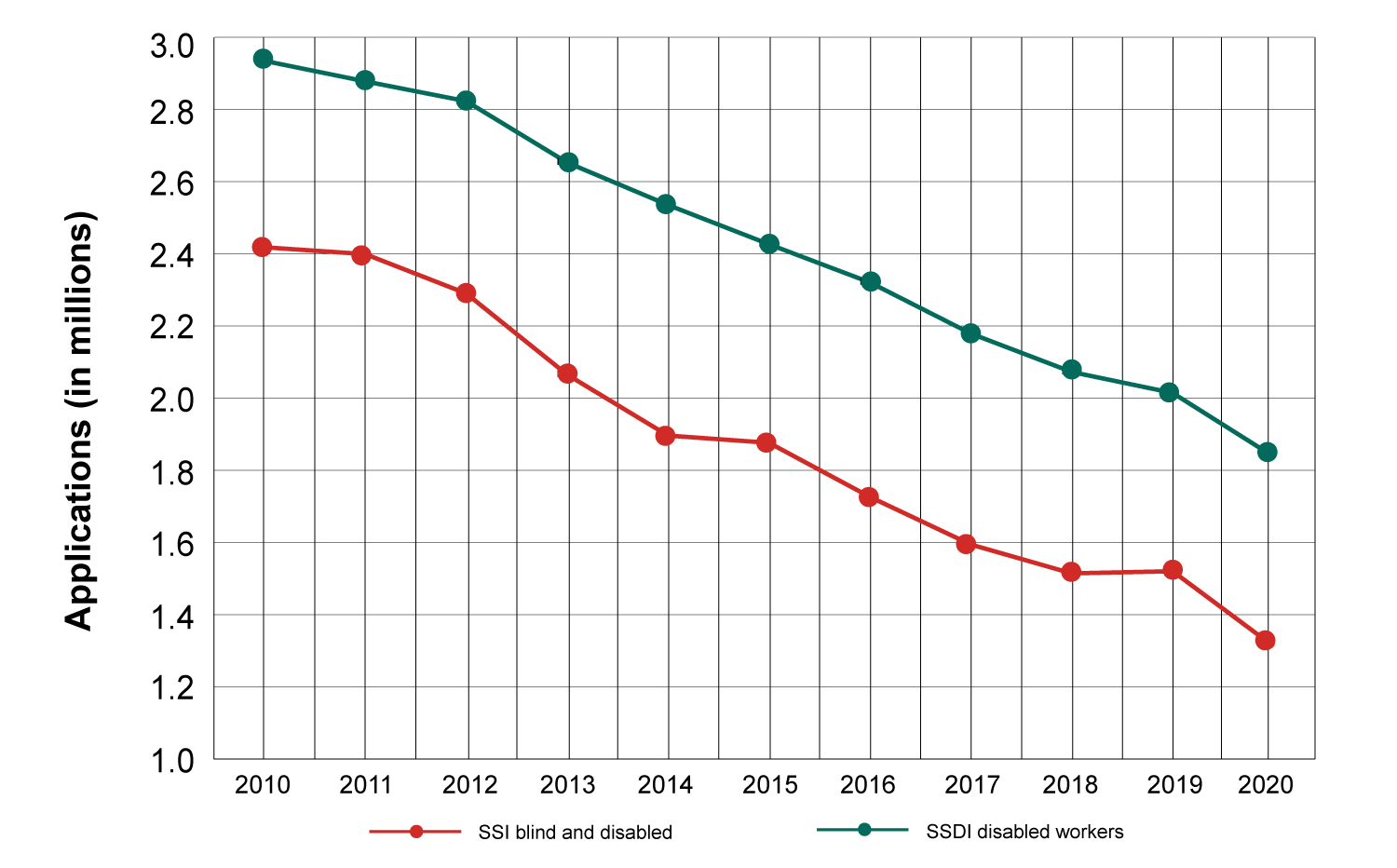The Social Security Administration (SSA), the agency that administers federal disability benefits in the United States, might face increased demand for its services because of the COVID-19 pandemic. The country’s experience with the pandemic, and lessons learned during the past two years mean that the time is right to reimagine provision of services to adults and children with disabilities.
People with disabilities have been disproportionately affected by the COVID-19 pandemic, with those who have chronic health conditions and intellectual disabilities having an elevated risk of poor outcomes, including death. Long-haul COVID has created an entirely new group of individuals who might have significant disabilities. It is too soon to know how many have long-lasting health conditions that limit their ability to work, which could make them eligible for federal disability benefits. Early estimates suggest that the number might range from 10 to 30 percent of those infected by the virus.
Despite the potential for increased need for federal disability benefits, SSA’s 1,230 local offices have been largely closed to walk-in visits since March 2020. These offices usually provide face-to-face support to applicants and beneficiaries, but shuttered due to health concerns for the staff and public. Though many of SSA’s services have been available by phone and online during office closures, benefit applications are complex, and applicants might have needed in-person support in completing them. Further, people with disabilities are less likely to have reliable internet and personal computer access, which reduce applications to disability programs. SSA makes some services available by phone, but call centers reported long waits and a high proportion of calls not handled in 2020.
At a time when the need for disability program benefits was likely on the rise, the number of people applying for benefits fell, continuing a decade-long decline. Recent evidence shows that Social Security Disability Insurance (SSDI) application levels did not rebound in 2021. For Supplemental Security Income (SSI), SSA’s latest projections indicated fewer applications in 2021 than 2020, followed by sharp increases in 2022 and 2023, consistent with pent-up demand for in-person services.
The steady decline in applications to federal disability programs accelerated in 2020
COVID-related office closures exacerbated access issues across the country, but for many, barriers to accessing services predated the pandemic. Between 2000 and 2019, SSA closed 118 local offices, which led to fewer SSI applications from people with disabilities living nearby. Even among those with reliable internet or who are willing to wait on the phone, many might prefer to work face-to-face with a claims representative or must do so given their disabling condition. Access challenges might contribute to the substantial local-level variation in award levels for SSDI and SSI.
The widespread closures of field offices make it likely that many potential applicants simply did not connect to disability programs when they might have otherwise. Those now looking to apply for benefits might have unmet needs for income supports, health insurance, and other services. Reopening field offices will be important to meet demand—but is not likely to be sufficient to reach underserved populations or consistent with changing expectations about how people interact with government services.
SSA recognizes the need to change expectations and is already assessing whether the agency equitably serves all people eligible for its programs. Recently, the December 2021 Executive Order on Transforming Federal Customer Experience and Service Delivery to Rebuild Trust in Government called on SSA to submit a report to the Office of Management and Budget by April 12, 2022, that identifies services that “currently require original or physical documentation or in-person appearance as an element of identity or evidence authentication” and “identifies potential opportunities for policy reforms that can support modernized customer experiences.“ This could lead to a move away from the traditional prioritizing of in-person services, and it will be necessary to consider whether the revamped system meets the needs of the country’s diverse population.
Three steps to reimagining how to better help people with disabilities
1. Simplify the online applications process.
In addition to requiring identification of and reporting on all SSA services that necessitate in-person appearances or physical documentation, the December 2021 Executive Order specifically calls on SSA to “develop a mobile-accessible, online process so that any individual applying for or receiving services from the Social Security Administration can upload forms, documentation, evidence, or correspondence associated with their transaction without the need for service-specific tools or traveling to a field office.” Improving these online tools and processes—particularly for those using smart phones or mobile devices—is an important step. However, SSA and other federal agencies looking to reach those in need will also have to confront access challenges that remain for those without reliable internet or for whom disabilities make mobile applications difficult.
2. Build on the success of mobile health clinics as a road map.
Faced with unprecedented demand during the pandemic, public health officials turned to mobile health clinics to reach underserved populations in rural and urban areas. Though mobile vaccination clinics typically do not serve as many people as stationary clinics, they have been heralded as a tool to reduce barriers to vaccine hesitancy, including among people living in rural regions, the unhoused, and the Black community. Deploying mobile clinics also reached populations not connected to providers and those who do not live near existing vaccine distribution centers. Mobile SSA field offices would provide more direct resources to potentially underserved areas and is consistent with SSA’s efforts to expand services to vulnerable populations. There must be a balance in doing outreach in a manner that is both sensitive to the population’s needs and cost-effective for the government. If there is interest in this effort, a small-scale pilot to assess feasibility could be quite valuable.
3. Analyze local data to focus limited resources.
Repositories like Covid ActNow provide local-level information about the effects of and responses to the pandemic, though they might miss important historical trends that preceded it. Instead of, or in addition to, leveraging external data, SSA might be able to draw on its own data to identify areas with unmet or exceptional need. For example, local-level measures of applications or beneficiary outcomes such as death might identify places that are historically underserved or indicate areas especially hard-hit by the pandemic. In both cases, residents could benefit from increased outreach via mobile field offices or other forms of support. Rural areas with limited broadband access might not see large gains from an improved mobile application option, but those same areas might significantly benefit from mobile field offices to interact with customers who need in-person services. Capitalizing on existing data, while recognizing there will not be a one-size-fits-all approach, can help SSA identify strategies to modernize its approach to meet the growing need for the agency’s services for the country’s diverse population.




